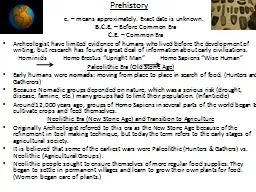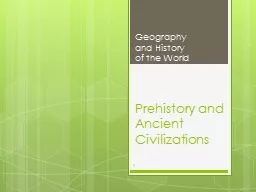PPT-Human Prehistory Early humans to the Neolithic revolution
Author : cheryl-pisano | Published Date : 2018-03-10
Human Prehistory The first bipedal hominids emerged over 5 million years ago in Africa The human species began to emerge in East Africa around 25 million years ago
Presentation Embed Code
Download Presentation
Download Presentation The PPT/PDF document "Human Prehistory Early humans to the Neo..." is the property of its rightful owner. Permission is granted to download and print the materials on this website for personal, non-commercial use only, and to display it on your personal computer provided you do not modify the materials and that you retain all copyright notices contained in the materials. By downloading content from our website, you accept the terms of this agreement.
Human Prehistory Early humans to the Neolithic revolution: Transcript
Download Rules Of Document
"Human Prehistory Early humans to the Neolithic revolution"The content belongs to its owner. You may download and print it for personal use, without modification, and keep all copyright notices. By downloading, you agree to these terms.
Related Documents














